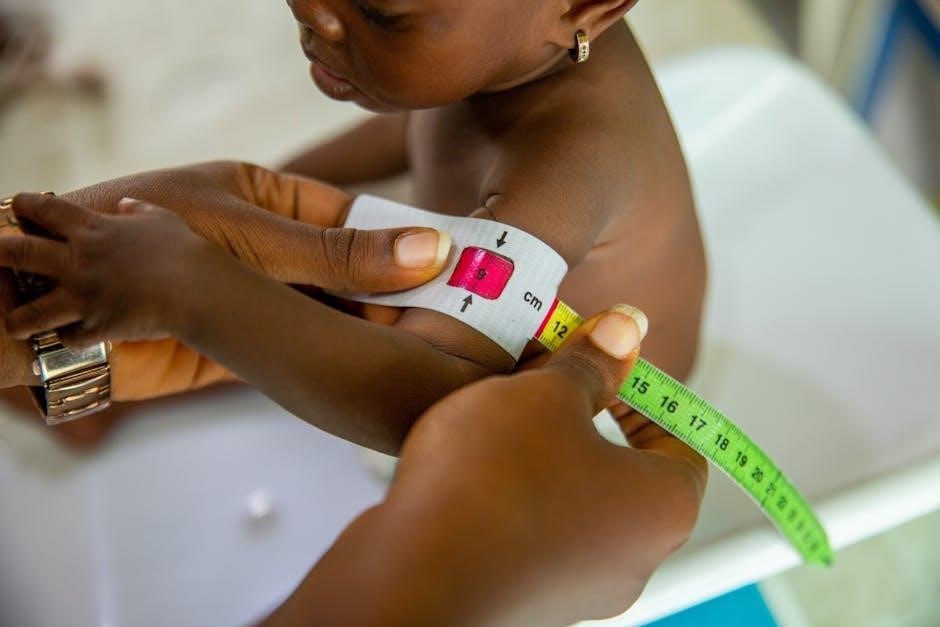The Child and Adolescent Functional Assessment Scale (CAFAS) is a widely used tool for assessing the day-to-day functioning of youth with behavioral, emotional, or psychological challenges. Developed in 1989, it evaluates functioning across critical life areas, providing a comprehensive framework for treatment planning and outcome tracking.
1;1 What is CAFAS?
The Child and Adolescent Functional Assessment Scale (CAFAS) is a renowned assessment tool designed to evaluate the day-to-day functioning of children and adolescents. Developed in 1989, it is widely recognized as the gold standard for assessing youth with behavioral, emotional, or psychological challenges. The CAFAS evaluates functioning across eight critical life domains, including behavioral, emotional, and psychological areas, as well as caregiver functioning. This comprehensive approach allows for a detailed understanding of a youth’s strengths and challenges in various aspects of their life.
The CAFAS is particularly valued for its ability to provide both a total score and individual subscale scores, offering a nuanced assessment of a youth’s functioning. The total score reflects the overall level of dysfunction, while the subscale scores highlight specific areas of difficulty. This dual-scoring system makes it an invaluable resource for treatment planning and outcome tracking. Additionally, the CAFAS is respected for its strong psychometric properties, with over 80 peer-reviewed articles supporting its reliability and validity. It is commonly used by mental health professionals, educators, and case managers to guide decision-making and monitor progress over time.
Overall, the CAFAS serves as a critical tool for understanding and addressing the complex needs of children and adolescents, ensuring that interventions are tailored to their unique circumstances and goals. Its widespread use underscores its importance in the field of child and adolescent mental health. The CAFAS is also available in a preschool version, known as the PECFAS, extending its applicability to younger children. Together, these tools provide a robust framework for assessing and supporting youth across different developmental stages. By focusing on functional outcomes, the CAFAS plays a pivotal role in improving the lives of children and adolescents facing diverse challenges. Its structured yet flexible design ensures that it remains a cornerstone in clinical and educational settings. The CAFAS continues to evolve, with updates and resources available to ensure its effective and ethical use in various contexts.
1.2 Importance of CAFAS in Assessments
The Child and Adolescent Functional Assessment Scale (CAFAS) holds significant importance in assessments due to its comprehensive and evidence-based approach. As the gold standard for evaluating youth functioning, it provides a detailed framework for understanding behavioral, emotional, and psychological challenges. The CAFAS is essential for determining the intensity of services needed, tracking treatment outcomes, and guiding case management decisions. Its ability to assess functioning across eight critical life domains ensures that interventions are tailored to the specific needs of each youth.
One of the key strengths of the CAFAS is its utility in setting measurable treatment goals and monitoring progress over time. By identifying both strengths and areas of dysfunction, it facilitates a balanced approach to treatment planning. Additionally, the CAFAS serves as a common language for professionals, enhancing collaboration among mental health providers, educators, and case managers. Its use also supports quality improvement initiatives by providing a standardized method for tracking outcomes and evaluating program effectiveness. Overall, the CAFAS is indispensable in ensuring that youth receive appropriate, targeted support, making it a cornerstone in mental health and educational assessments.
By focusing on functional outcomes, the CAFAS plays a critical role in improving the lives of children and adolescents facing diverse challenges. Its structured yet flexible design ensures its relevance across various settings, from clinical interventions to educational planning. The CAFAS continues to be a vital tool for professionals seeking to make a meaningful impact on youth well-being.

Structure of the CAFAS
The CAFAS evaluates functioning across eight critical life subscales and two caregiver scales. It yields a total score and individual subscale scores, providing a comprehensive assessment of a youth’s functional abilities and caregiver support, which effectively guides treatment planning and service intensity.
2.1 Overview of CAFAS Subscales
The CAFAS assessment is structured into eight critical life subscales, each evaluating specific functional areas of a youth’s behavior and well-being. These subscales include Behavior Towards Others, Emotional/Depression, Anxiety, Attention/ADHD, Substance Use, School/Work, Home Situation, and Community Functioning. Additionally, two scales assess the functioning of caregivers, focusing on their ability to support the youth effectively. Each subscale is rated on a continuum, ranging from no impairment to severe dysfunction, allowing for a nuanced understanding of the youth’s strengths and challenges. The total score is derived from these subscales, providing a comprehensive measure of overall functioning. This structure ensures that the assessment is both detailed and holistic, making it a valuable tool for treatment planning and monitoring progress over time. The subscales are designed to be practical and relevant, ensuring that the CAFAS remains a reliable and widely used instrument in child and adolescent mental health assessments.

Uses of CAFAS
CAFAS is utilized to determine service intensity, track outcomes, aid case management, set treatment goals, monitor quality improvement, and enhance collaboration among treatment providers, making it an essential tool in treatment planning and monitoring progress.
3.1 Determining Intensity of Services
CAFAS effectively guides the determination of appropriate service intensity by assessing dysfunction across various life domains. Scores indicate the level of impairment, with higher totals suggesting more intensive interventions. This ensures resources are allocated based on individual needs, optimizing treatment effectiveness and efficiency.
3.2 Outcome Measurement
CAFAS is a valuable tool for tracking changes in a youth’s functioning over time, making it an essential instrument for outcome measurement. By comparing scores from initial assessments to subsequent evaluations, clinicians can gauge progress, identify areas of improvement, and adjust treatment plans accordingly. This longitudinal perspective ensures that interventions remain effective and tailored to the individual’s evolving needs. Regular administration of the CAFAS allows for consistent monitoring, providing clear insights into the efficacy of services and facilitating data-driven decision-making. This continuous assessment not only enhances accountability but also supports the refinement of treatment strategies, ultimately aiming to achieve the best possible outcomes for the youth.
3.3 Case Management Aid
CAFAS serves as an invaluable tool for case management, providing a structured framework to monitor and adjust treatment plans based on a youth’s progress. By assessing functioning across critical life domains, CAFAS enables case managers to identify areas requiring additional support and tailor interventions accordingly. This ensures that services are aligned with the individual’s specific needs, enhancing the effectiveness of care. The scale’s ability to track changes over time allows case managers to adjust strategies dynamically, addressing emerging challenges and capitalizing on strengths. Furthermore, CAFAS facilitates communication among multidisciplinary teams, ensuring a coordinated approach to care. Its standardized format helps in documenting progress, making it easier to review and adjust case plans. This systematic approach not only improves outcomes but also enhances accountability in service delivery. By integrating CAFAS into case management, professionals can ensure that youth receive comprehensive, targeted support, fostering better long-term results.
3.4 Setting Treatment Goals
CAFAS plays a pivotal role in setting treatment goals by providing a clear roadmap for addressing a youth’s functional challenges. The assessment identifies specific areas of strength and weakness, enabling clinicians to establish targeted and measurable objectives. By evaluating functioning across eight critical life domains, CAFAS highlights where interventions are most needed, ensuring goals are both relevant and actionable. This approach allows treatment plans to be tailored to the individual’s unique circumstances, fostering a more personalized and effective care process. Additionally, CAFAS scores serve as a baseline, against which progress can be measured, enabling adjustments to goals as the youth’s situation evolves. This dynamic aspect of CAFAS ensures that treatment remains responsive to the youth’s changing needs, promoting better outcomes and continuous improvement. Ultimately, CAFAS not only aids in setting initial goals but also supports ongoing refinement, making it an essential tool for guiding the treatment journey.
3.5 Quality Improvement Tracking
The Child and Adolescent Functional Assessment Scale (CAFAS) is a valuable tool for tracking quality improvement in mental health and social services. By regularly administering the CAFAS, organizations can monitor the effectiveness of their interventions and identify areas for enhancement. The tool provides a standardized method for assessing changes in a youth’s functioning over time, allowing agencies to evaluate the impact of their programs and services. CAFAS data can be aggregated to benchmark outcomes against industry standards or internal goals, fostering accountability and continuous improvement. Additionally, the detailed subscale scores enable organizations to pinpoint specific domains where improvements are needed, such as school performance or behavioral regulation. This level of granularity supports data-driven decision-making and resource allocation. Furthermore, CAFAS training and certification processes ensure reliability and consistency in assessments, which are critical for accurate quality tracking. By leveraging CAFAS, organizations can demonstrate their commitment to delivering high-quality care and achieving measurable outcomes for the youth they serve.
3.6 Enhancing Treatment Collaboration
The Child and Adolescent Functional Assessment Scale (CAFAS) plays a significant role in enhancing treatment collaboration by providing a common language and framework for professionals involved in a youth’s care. The standardized assessment ensures that all team members, including mental health providers, case managers, educators, and caregivers, have a shared understanding of the youth’s strengths and challenges. This consistency facilitates effective communication and coordination among stakeholders, reducing misunderstandings and ensuring a unified approach to treatment. CAFAS scores and subscales offer a clear, objective basis for discussing treatment goals and progress, making it easier for multidisciplinary teams to align their efforts. Additionally, the tool’s focus on functional outcomes helps professionals identify areas where collaboration is most critical, such as school performance or family dynamics. By providing a comprehensive yet concise overview of a youth’s functioning, CAFAS supports the development of coordinated treatment plans that address the full range of needs. Regular use of CAFAS also enables teams to track progress collaboratively, fostering a culture of accountability and shared responsibility for improvement. This collaborative approach ultimately enhances the quality and effectiveness of care for youth and their families.

Scoring and Interpretation
The CAFAS scoring system ranges from 0 to 240, with higher scores indicating greater dysfunction. The total score reflects overall functioning, while subscales assess specific areas like behavior, emotional issues, and social interactions.
Interpretation involves analyzing total and subscale scores to determine severity levels and track progress over time, guiding treatment adjustments and outcome evaluations.
4.1 Understanding CAFAS Total Score
The CAFAS total score is a composite measure of a youth’s functioning across all assessed life areas, ranging from 0 to 240. Higher scores indicate greater dysfunction and the need for more intensive interventions. The total score is calculated by summing the ratings from all 10 subscales, which assess domains such as behavior, emotional issues, and social interactions.
Interpretation of the total score is critical for determining the severity of a youth’s functional impairment. For example, a score of 90 or higher for children aged 7–12, or 120 and above for those aged 13–18, indicates significant dysfunction requiring targeted interventions. For younger children aged 4–6, elevated PECFAS subscale scores (20 or higher) in areas like self-harmful behaviors or mood/emotions also signal concerns.
The total score is also used to track changes over time, with improvements or declines reflecting treatment effectiveness. This longitudinal use helps clinicians and caregivers monitor progress and adjust treatment plans accordingly. By providing a clear, quantifiable measure of functioning, the CAFAS total score serves as a powerful tool for guiding decision-making and evaluating outcomes in mental health and social services settings.
4.2 Interpreting Subscale Scores
CAFAS subscale scores provide detailed insights into specific areas of a youth’s functioning, allowing for a nuanced understanding of their strengths and challenges. Each of the 10 subscales assesses a distinct domain, such as Behavior Toward Others, Emotional Issues, and Family/Caregiver Involvement. Scores for each subscale range from 0 to 30, with higher scores indicating greater impairment in that area.
Subscale scores are categorized into levels of severity: minimal impairment (0–9), moderate impairment (10–19), and severe impairment (20–30). For example, a score of 20 or higher on the Self-Harmful Behavior subscale may signal significant risk and the need for immediate intervention. Similarly, a high score on the School/Work subscale could indicate difficulties in academic or vocational settings.
Interpreting subscale scores helps identify specific areas requiring attention and informs targeted interventions. For instance, elevated scores on the Thinking/Communicating subscale may suggest cognitive or communication challenges that need addressing. Clinicians use these insights to develop focused treatment plans and monitor progress over time.
By evaluating subscale scores alongside the total score, professionals can gain a comprehensive understanding of a youth’s functional challenges and strengths, ensuring a well-rounded approach to care.

Administration and Training
The administration of the CAFAS requires proper training to ensure accurate and reliable assessments. Clinicians, social workers, and other professionals are typically trained to administer the scale effectively. Training programs are designed to familiarize users with the tool’s structure, scoring criteria, and interpretation of results. These programs often include case examples, role-playing exercises, and hands-on practice to enhance understanding and proficiency.
Training sessions are usually conducted by certified professionals who have extensive experience with the CAFAS. These sessions may range from 2 to 3 days, depending on the depth of training required. Participants learn how to assess functional impairment across the 10 subscales, interpret scores, and apply the results to real-world scenarios. Online training options are also available, offering flexibility for professionals to complete the program at their own pace.
Proper administration ensures that the CAFAS is used consistently and reliably across different settings. This is crucial for maintaining the validity of the results and for comparing outcomes over time. Agencies and organizations often provide ongoing training and support to ensure that staff remain proficient in using the CAFAS. Regular updates and refreshers are also offered to keep users informed about any revisions or new features of the assessment tool.
